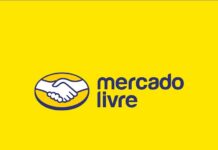Edson Perin
SIG, one of the world’s largest providers of carton packaging solutions and filling technology in the food and beverage industry, has gained benefits with the digitization of processes in Brazil, due to the implementation of a radio frequency identification (RFID) solution from iTag Etiquetas Inteligentes. “With the initiative, we have gained productivity and reduced the use of paper within the process, in addition to being able to quickly identify packaging using our digital systems”, says Rômulo Andrade, manager of SIG’s services area in Brazil, who worked together with Carlos Rios, coordinator of SIG’s digital platform.
SIG’s customers are present in more than 65 countries and fill more than 10,000 products in more than 50 categories in the company’s carton packs. This Brazilian RFID project started with a dairy company (learn more at Cooperativa gaúcha melhora eficiência com QR Codes – article in Portuguese), that started receiving RFID tags for better distribution and inventory control – a process monitored by SIG.
According to Carlos Rios, “RFID is being used to complement the traceability system installed at one of our customers, where through labels engraved at our Campo Largo (Parana, Brazilian State) plant, we are able to link the packaging production to its tracking data from plant. Before that, such information needed to be stored in daily books with operational notes ”. GS1’s EPC UHF standard is not in use in this case. “Due to the limited space of each label, we optimize and standardize the information according to our needs.”

Briefly, the RFID process works as follows: at SIG’s Campo Largo (PR) plant, labels are recorded during the operation of the production lines, with information on time and date, line number, type of product, production order and other relevant data for traceability.
“In our client, the readers were already installed in our filling machines, and every time a box of packaging is placed on the machine, its label is automatically read and its information recorded in the database”. The main gain already achieved with RFID, according to Rios, was the possibility of digitizing a part of the traceability process, ensuring that all steps are connected, in addition to greater agility and security, since it is not necessary to use paper in the process. “The middleware is responsible for allocating all the data that make up the system, integrating with the ERP system, aggregating in the boxing system, managing the analysis and releasing tanks for production and products for dispatch.”
“Also through middleware”, explains Andrade, “we update data on the printers that make up the system and read the cameras that identify the packaging on the production line. The system was totally conceived and developed by the Digital Platform team, from SIG, with the initial support of iTag, which provided the software used. “As it was our first project with RFID tags and we did not have a team specialized in the system, the supplier [iTag] helped us to specify the best model to meet our need”, added Rios.
Sérgio Gambim, iTag’s CEO, speaks of the satisfaction of carrying out an implantation in a company like SIG and bringing to practice the positive results of automatic identification and tracking by RFID. “We are proud to develop projects like that of SIG and customers like this that get benefits from RFID tags, because they depend on processes where screening is of paramount importance.” He concluded: “we were invited to design the project for the identification and screening of SIG’s master packaging, where the smaller items go”. According to iTag’s CEO, now his company expects the second evolution of the project. “For us at iTag, every product deserves an RFID tag”, said Gambim.
The RFID readers were installed on the production line, to record information on the labels during the handling of the packaging boxes and also on our filling machines that are installed inside the factories of our customers where the information that was recorded is read. Siemens brand readers were installed at the SIG plant and also at customers. The tags, in turn, are supplied and manufactured by iTag, with a Impinj Monza R6P chip.
“Our system integrates with the customer’s ERP”, explains Rios, “but does not use RFID information in this operation.” The system works with multiple databases, with a local database that synchronizes important information to a cloud database.
“We believe that the use of this RFID technology has brought several benefits to our systems”, adds Andrade, “since we work uniting tools from industry 4.0 with benefits of performance gains and digitization for our customers. The biggest challenge within this context is the cost of non-reusable labels, which has a significant impact on the business, but with technological advances and the increased use of this technology we believe that this cost will be diluted and will become even more accessible over time.”
The main challenges to implement the system, as explained by the SIG team, were related to the size of the labels, application and the development of the reading and identification system, as this is a novelty in the company’s processes. “At SIG, the company’s digital solutions area has full autonomy to make decisions and, in this case, to define the best means to achieve complete traceability for our client. It is a very large and complex project that seeks information from different sources and RFID technology was essential for its success.”
For the future of RFID in the company, Rios says there are other initiatives under study, such as identifying all trucks that transport products so that the entire process is automated so that the industry automatically recognizes when and which truck enters or leaves the factory.



















